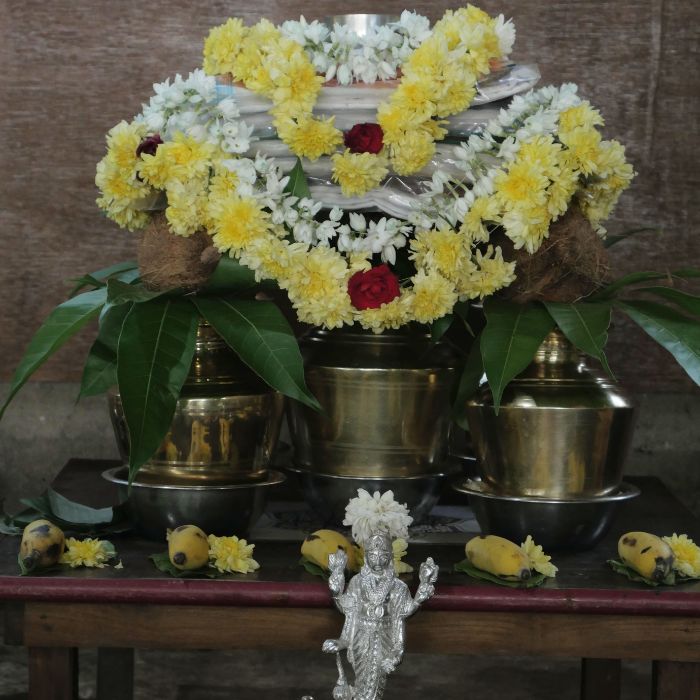Narayana Bali Pooja, a profound and sacred ritual in Hinduism, holds great significance in helping souls attain peace and liberation. Performed predominantly in parts of India, this pooja addresses unresolved grievances and untimely deaths, aiding the departed souls to find solace and move towards Moksha, or liberation. This blog delves into the depths of Narayana Bali Pooja, explaining its purpose, procedure, and the immense spiritual benefits it offers.

Introduction to Narayana Bali Pooja
Narayana Bali Pooja is an ancient Hindu ritual aimed at pacifying the souls of those who have died an unnatural death or have unresolved desires. Such deaths could be due to accidents, suicides, or other sudden events, leaving the soul restless and unfulfilled. This pooja is believed to alleviate the suffering of these souls, ensuring they attain peace in the afterlife.
Why Narayana Bali Pooja is Performed
The primary reason for performing Narayana Bali Pooja is to pacify the souls of the deceased who have met untimely or unnatural deaths. According to Hindu beliefs, such souls wander aimlessly, causing distress to their living relatives. By performing this pooja, the family seeks to bring tranquility to the departed soul, thereby reducing the negative influences on the living family members.
Spiritual Significance
- Liberation of Souls: Narayana Bali Pooja helps in the liberation of souls stuck between worlds due to unfulfilled desires or sudden death.
- Removal of Pitru Dosha: It alleviates the negative effects of Pitru Dosha, a condition where ancestral spirits are believed to be dissatisfied.
- Family Harmony: Performing this pooja is said to bring harmony, peace, and prosperity to the family.
Detailed Procedure of Narayana Bali Pooja
Narayana Bali Pooja is a meticulous ritual, requiring precise adherence to Vedic instructions. Here’s a step-by-step guide to how the pooja is conducted:
1. Preparation
- The ritual begins with the purification of the mind, body, and surroundings.
- The priest sets up the pooja area with necessary items like grains, flowers, sesame seeds, and sacred water.
2. Sankalpa (Vow)
- The head of the family takes a vow, expressing the intention to perform the pooja for the peace of the departed soul.
3. Invocation of Deities
- Deities like Lord Vishnu and the ancestors are invoked through mantras and offerings.
4. Main Ritual
- An effigy made of wheat flour, representing the deceased, is created.
- The priest chants mantras to invite the soul into the effigy.
- The effigy is then subjected to symbolic cremation, ensuring the soul is liberated.
5. Offering to Crows
- As part of the ritual, food is offered to crows, believed to be messengers of Yama, the god of death.
- Acceptance of the offering by the crows is considered a sign that the soul has attained peace.
6. Final Rites:
- The ritual concludes with prayers for the family’s well-being and the departed soul’s journey to the afterlife.
Where and When to Perform Narayana Bali Pooja
Narayana Bali Pooja is typically performed at specific sacred locations known for their spiritual energy. Prominent among these are:
- Gokarna: A revered pilgrimage site in Karnataka.
- Rameswaram: A holy town in Tamil Nadu, famous for its temples.
- Trimbakeshwar: Located in Maharashtra, this place is known for its spiritual significance and rituals.
The pooja can be performed on auspicious days like Amavasya (New Moon) or during specific lunar months, which are considered ideal for ancestral rituals.
Benefits of Narayana Bali Pooja
1. Spiritual Benefits
- Ensures the soul’s journey to a peaceful afterlife.
- Alleviates ancestral curses and brings blessings to the family.
2. Personal and Family Benefits
- Promotes family harmony and reduces conflicts.
- Attracts prosperity and success by removing negative ancestral influences.
3. Health and Well-being
- Believed to cure chronic illnesses and health issues caused by Pitru Dosha.
Importance of Performing Narayana Bali Pooja Correctly
Performing Narayana Bali Pooja with utmost devotion and adherence to rituals is crucial for achieving its benefits. Here are some tips to ensure the pooja is conducted properly:
1. Choose an Experienced Priest
- Ensure the priest is well-versed in Vedic rituals and has experience performing Narayana Bali Pooja.
2. Follow Traditional Procedures
- Stick to the traditional procedures and timings for maximum effectiveness.
3. Devotion and Faith
- Approach the pooja with sincere devotion and faith, which are essential for its success.
Common Misconceptions about Narayana Bali Pooja
1. It's Only for Those Who Died Unnaturally
- While it is primarily for such souls, Narayana Bali Pooja can also benefit those experiencing significant ancestral disturbances.
2. It Can Be Done Casually
- This pooja requires strict adherence to rituals; casual or incomplete performance may not yield desired results.
3. Only One Family Member Needs to Attend
- Ideally, close family members should participate to express collective respect and devotion.
Frequently Asked Questions about Narayana Bali Pooja
While it’s possible, performing it at sacred sites under the guidance of experienced priests is more beneficial.
The entire ritual typically spans over two to three hours.
It’s customary to wear traditional attire, preferably white, symbolizing purity.
It’s advisable to focus solely on Narayana Bali Pooja to maintain its sanctity.
Conclusion
Narayana Bali Pooja stands as a testament to the profound spiritual traditions of Hinduism, offering peace to restless souls and harmony to the living. By understanding and performing this pooja, families can ensure their ancestors’ souls attain peace, thereby bringing prosperity and tranquility into their lives.
If you or your family are experiencing disturbances believed to be due to unsettled ancestral spirits, consider performing the Narayana Bali Pooja. For expert guidance and a seamless experience, reach out to Narayana Nagbali Pooja today. Let us help you bring peace to your ancestors and harmony to your home.

